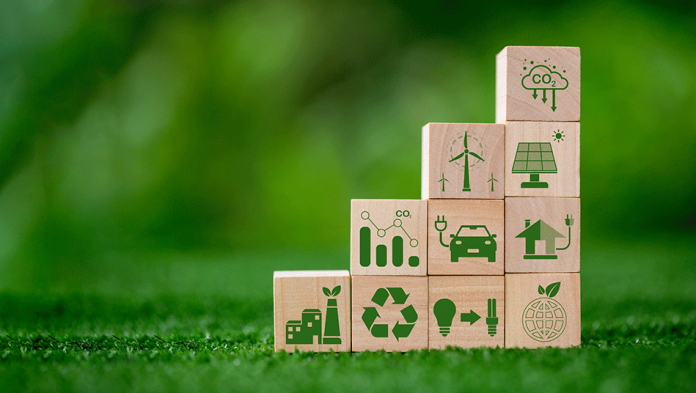Sustainable signage is a growing trend in the sign-making industry that seeks to create environmentally friendly, socially responsible, and economically viable signs. Sustainable signage involves using materials, technologies, and processes that minimize environmental impact, reduce waste and promote sustainability.
Why is sustainable signage important?
Sustainable custom signs are crucial because they help to reduce the environmental impact of sign-making and promotes sustainability. Sustainable materials like recycled plastic, bamboo, or reclaimed wood can minimize waste and conserve natural resources. Sustainable signage can also promote social responsibility by supporting local communities and reducing the use of harmful chemicals and processes.
Sustainable signage can also provide economic benefits to businesses. Businesses can save money on materials, disposal, and maintenance costs by reducing waste and using environmentally friendly materials and processes. Additionally, sustainable signage can attract environmentally conscious customers who may be more likely to support businesses that demonstrate social and environmental responsibility.
Environmentally friendly materials for sustainable signage
Environmentally friendly materials for sustainable signage are vital to the growing trend towards more sustainable and environmentally conscious business practices. Sustainable signage is good for the environment and can save businesses money on materials and disposal costs while attracting environmentally conscious customers. You can use several ecologically friendly materials in your signage projects, including the following:
Recycled plastic
This material is made from post-consumer waste, such as plastic bottles and containers, and can be recycled again after use. Recycled plastic signs are durable, lightweight, and resistant to weather and UV radiation, making them a popular choice for outdoor signage that needs to withstand the elements.
Bamboo
Bamboo is a fast-growing, renewable resource that does not require replanting after harvest. Bamboo signs are lightweight, durable, and resistant to weather and UV radiation, making them an excellent choice for outdoor and indoor signage.
Reclaimed wood
Reclaimed wood is a popular choice for those looking for custom signs with a more rustic or vintage look. Reclaimed wood has been collected from old buildings or structures and repurposed for use in signage. Reclaimed wood signs are environmentally friendly and add a unique character to the sign. They are also durable and resistant to weather and UV radiation, making them an excellent choice for outdoor signage.
Biodegradable materials
Biodegradable materials, such as cornstarch-based plastics, can produce signage. These materials break down naturally and do not leave harmful environmental residues. Biodegradable signs are suitable for short-term use and can be disposed of quickly. They are a great option for businesses that want to minimize their ecological impact.
Led lighting
LED lighting is an environmentally friendly lighting option for signage. LED lights consume less energy than traditional lighting and have an extended lifespan, reducing waste and the need for frequent replacements. LED lighting is also highly customizable and can create various lighting effects for signage. This makes them popular for businesses looking to create eye-catching signage while promoting sustainability.
In addition to these materials, there are other environmentally friendly options for sustainable signage. For example, some businesses use digital signage instead of traditional signs made from materials like plastic or wood. Digital signage uses screens and projectors to display information, which can be easily updated and changed without needing new materials or disposal of old signage. This makes it a great choice for businesses that want to minimize their environmental impact while maintaining a modern, professional appearance.
When choosing environmentally friendly materials for sustainable signage, it’s essential to consider factors such as durability, resistance to weather and UV radiation, and ease of maintenance. Signs that require frequent replacement or repair can become more costly and environmentally damaging in the long run. Consider the environmental impact of the production and disposal of the materials used in the sign.
Sustainable signage design and production
You must consider several factors to achieve sustainability in signage design and production:
Design
The design of a sustainable sign should take into account several factors to ensure it promotes sustainability. First, the use of recycled materials should be considered. The designer should look for materials made from recycled content, such as plastic or metal. This reduces the amount of waste going to landfills and helps to conserve natural resources.
Secondly, only minimal waste should be produced during the sign’s production, which can be achieved through careful planning and efficient production techniques. For example, the designer can plan the sign to be made from standardized sizes of materials to minimize the amount of scrap generated during the manufacturing process.
Thirdly, the designer should consider energy consumption in the sign’s design. This can include using energy-efficient lighting, such as LEDs, or incorporating solar panels to power the sign. Additionally, the design can be optimized to minimize the energy required to produce and install the sign.
Production
The production of sustainable signage should be carried out using environmentally friendly processes that minimize waste and reduce environmental impact. This can include using renewable energy sources, such as solar or wind power, to power the manufacturing process. Additionally, the production process can be optimized to minimize waste and reduce environmental impact.
For example, using water-based or solvent-free inks in printing can reduce emissions of volatile organic compounds (VOCs) that contribute to air pollution. Similarly, computer-aided manufacturing (CAM) and computer numerical control (CNC) machines can reduce waste by optimizing material usage and reducing manual labor.
Maintenance
Sustainable signage should be maintained regularly to ensure that it remains in good condition and continues to promote sustainability. Regular cleaning, repair, and replacement of damaged components can help prolong the sign’s life and reduce waste.
Additionally, maintenance can include updating the sign to promote sustainability. For example, the sign can be updated with new messaging that promotes environmentally friendly practices or highlights the business’s sustainability initiatives.
Final thoughts
Sustainable signage requires a holistic approach that takes into account the entire lifecycle of the sign. Designing the sign to be sustainable, using environmentally friendly production techniques, and regularly maintaining it to ensure it remains in good condition are all crucial factors in achieving sustainability in signage design and production. By promoting sustainability in signage, businesses can demonstrate their commitment to the environment and attract environmentally conscious customers.




































